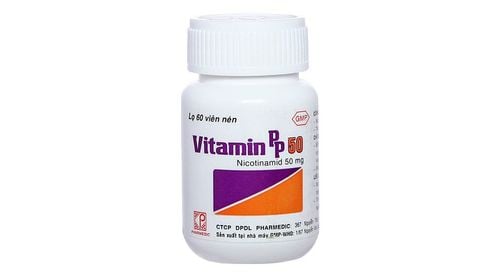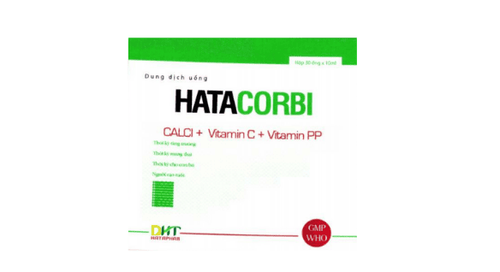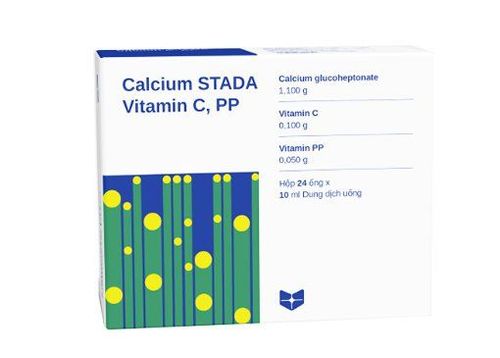This is an automatically translated article.
Vitamin PP (or niacinamide) is a B vitamin, more specifically the amide form of vitamin B3. In the body, niacinamide is converted into substances that play an important role in vital cell reactions.1. Vitamin PP overview
Vitamin PP (also known as niacinamide or nicotinamide) is a form of vitamin B3 (niacin) - one of the eight B vitamins that the body needs for good health. Vitamin B3 plays an important role in converting food intake into usable energy and helping the body's cells carry out important chemical reactions. Due to its water-soluble nature, the body does not store this vitamin, which is why we need to take vitamin B3 daily. Vitamin B3 is commonly found as vitamin PP in products of animal origin, such as meat and poultry, and as nicotinic acid (the residual form of vitamin B3) in foods of plant origin. such as nuts, seeds and green vegetables.Many grain products (whether whole grain or refined) are also high in vitamin PP.
The body can also make vitamin B3 from tryptophan, an amino acid found in most protein foods. However, converting tryptophan to vitamin B3 is inefficient, as 60mg of tryptophan is needed to make only 1mg of vitamin B3.
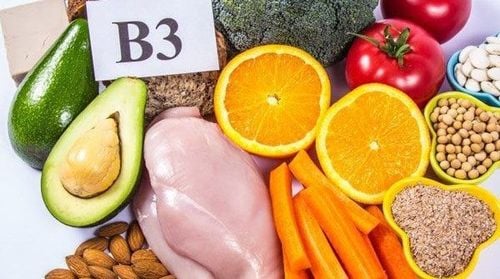
Vitamin B3 thường được tìm thấy dưới dạng vitamin PP trong các sản phẩm có nguồn gốc động vật
2. What is the effect of Vitamin PP?
In addition to being the preferred form of vitamin B3 for treating pellagra, vitamin PP has a number of other health uses and benefits.2.1 Beneficial for Certain Skin Conditions Vitamin PP plays an important role in keeping your skin healthy. For this reason, vitamin PP is a popular additive in the cosmetic and skin care industry.
When applied topically or taken orally as a supplement, vitamin PP has been shown to have anti-inflammatory effects on the skin, used to treat skin conditions such as acne and rosacea, a disorder Facial skin is characterized by redness. This makes vitamin PP a popular alternative to oral or topical antibiotics to treat acne or rosacea.
2.2 Helps prevent melanoma Melanoma is a serious type of skin cancer that develops in the cells that produce melanin, the pigment that gives your skin its color.
Exposure to ultraviolet (UV) radiation from the sun or from electronic devices can damage the DNA of cells over time and is strongly associated with melanoma.
With a role in keeping cells healthy, oral vitamin PP supplements have been shown to enhance DNA repair in UV-damaged skin in humans.
Therefore, niacinamide is a promising supplement that may protect against melanoma, especially in people at high risk, such as those who have previously had non-skin cancer. melanocytes.
2.3 Helpful for Chronic Kidney Disease Chronic kidney disease is a gradual loss of kidney function that affects the body's ability to clean, filter, and control blood pressure. This can cause a build-up of harmful substances in the blood, such as phosphate radicals.
Research shows that vitamin PP can help reduce phosphate levels in people with kidney dysfunction by blocking absorption in the kidneys.
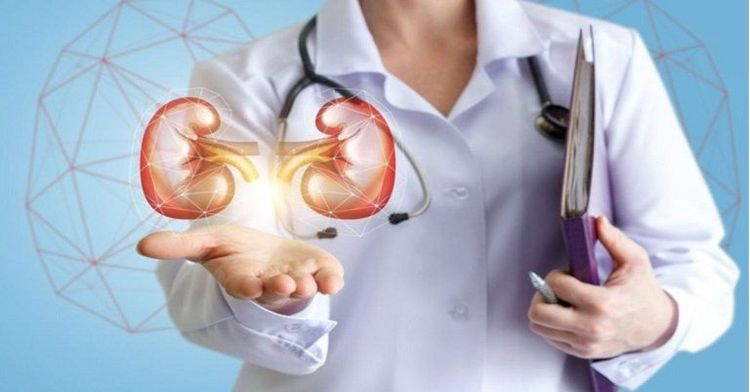
Vitamin PP được cho rằng hữu ích cho bệnh thận mãn tính
2.4 May slow the progression of type 1 diabetes Type 1 diabetes is a condition in which our body attacks and destroys the insulin-producing beta cells of the pancreas. It has been suggested that vitamin PP helps protect and preserve beta cells, thereby preventing or delaying the onset of type 1 diabetes in at-risk individuals.
However, some studies do not support the idea that vitamin PP can prevent the onset of type 1 diabetes, although it may help delay the progression of the disease by maintaining cellular function. beta.
Despite promising effects, more research is needed before niacinamide can be recommended as an intervention for type 1 diabetes.
3. Dosage and how to use vitamin PP
Dietary supplementation, the usual oral dose of vitamin PP is as follows:Vitamin PP is often used in combination with other vitamins in the preparation to supplement the diet:
Adults: Dose 13 - 19 mg/day, used 1 time or divided into 2 times. Pregnant and lactating people, nutritional deficiencies: dose 17 - 20 mg/day, used once or divided into 2 times. Children: dose 5 - 10 mg/day, used once or divided into 2 times. In cases where oral medication is not possible, niacinamide can be treated by intramuscular or slow intravenous infusion at a dose of 25 mg, administered 2 or more times per day. When administered intravenously, the injection rate should not exceed 2 mg/min.
Treatment of pellagra:
Adults: The usual dose is 300 - 500 mg/day, maximum 1500 mg/day, divided into 3 - 10 times. Children: The usual dose is 100 - 300 mg/day, divided into 3 - 10 times. Acne treatment:
Apply ointment to the damaged facial skin twice a day and evaluate the treatment results after 8-12 weeks.
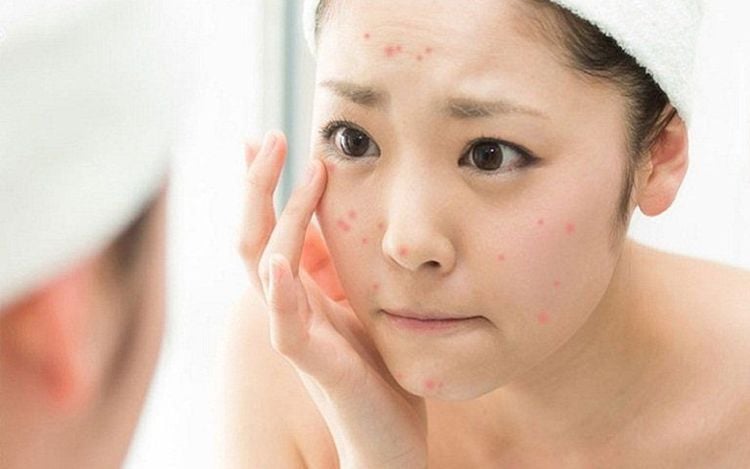
Khi dùng để điều trị mụn trứng cá, bạn cần bôi thuốc mỡ lên vùng mụn ngày 2 lần
4. Side effects of vitamin PP
Niacinamide is generally well tolerated in appropriate doses, largely because excess amounts will be excreted in the urine.The tolerable upper limit of vitamin B3 is 35mg per day. This is the amount that is less likely to cause flushing, redness, itching and tingling in the skin, a known side effect of nicotinic acid but not of vitamin PP.
There have been reports of less common side effects associated with vitamin PP , such as upset stomach , nausea and headache .
It has also been suggested that vitamin PP may increase insulin resistance, a marker of type 2 diabetes, but there is insufficient scientific evidence.
Please dial HOTLINE for more information or register for an appointment HERE. Download MyVinmec app to make appointments faster and to manage your bookings easily.
Reference source: healthline.com




